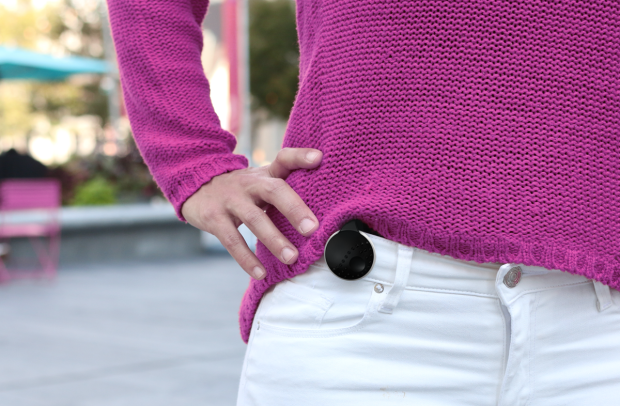At the frontier of our rapid technological advancement is wearable technology. The current innovations incorporate technology not just onto our our lifestyles but our physical persons. One iteration of this new technology is the “smartwatch,” a multi-function smartphone with a miniature screen worn on the wrist. Some wearable technology is engeineered for specific applications. Electronic wristbands, for example, detect your heartrate and track the number of steps you take in a day. Glasses equipped with cameras and sensors analyze surroundings and provide information while recording a user’s experience.
Several products have been developed with the aim of preventing sexual assault. The latest product of this kind is Athena. Athena is the first product launched by Roar for Good, a B-corporation that aspires to combat sexual violence. Their product, a modestly-sized panic button, can be clipped anywhere on a person and when pressed will notify pre-programmed contacts of the user’s location and, optionally, emit an alarm, Roar is trying to market the slick, simple design and as a fashion piece. Other products of this kind include Safelet and PRO(TECH)T, which is still in development. Both are wristbands that have the same function as Athena, without the option to sound an alarm. What also sets Athena apart from these wristbands is that they limit the user to one hand for access, whereas Athena, depending on where and how it’s worn, could be accessed by either hand.
Product development in this area has not been limited to digital technologies. Two years ago, a few Indian engineers were working on a bra that would shock a rapist if enough force was put on it. There is now anti-rape underwear made of “cut-resistant” fabric that can be locked around the waist.
The development of such products reflects a deisre to curb sexual assault, but should men and women be expected to wear these preventive technologies to protect themselves? While such products might prove effective deterents, they do nothing to address the underlying social problems of sexual assault and may encourage wrong-headed thinking on the issue.
The difficulty with these products is that they operate under and perpetuate two specific premises. The first is that a potential victim will be capable in the moment of preventing sexual assault. According to one article, in a violent assault situation, the first response of a victim tends to be physical immobility. Unless the victim is well-trained and practiced with defensive tactics, more often than not he or she will freeze and therefore may not get a chance to activate a button or wristband. The second misconception is that sexual assault is usually perpetrated by strangers. Research says that four out of five rapes are committed by a person with whom the victim is familiar. In a familiar environment with a trusted person, a potential assualt victim may not be prepared by wearing such a product.
While wearing Athena may help a person feel safer in a threatening moment and be aware that they have an escape plan in case of trouble, these technologies problematically put more responsibility for preventing sexual assult onto potential victims. Should the user not be wearing the product when the assault occurs, fail to to activate it in time, or if the attacker violently reacts to the user’s alerting someone, the victim may fall into the trap of believing that he or she bears some blame for failing to prevent the assault.
This does not mean that consumer product engineers should be discouraged from developing preventive technology. Athena could certainly be a useful device in very particular circumstances, enough to validate its use. But what really needs to change is the underlying social and cultural conditions that foster this type of violence. The companies behind these technologies acknowledge that they are not solving the problem, but rather attempting to address an unforrunate reality by providing protection. Roar for Good has promised to put its proceeds toward programs that campaign for awareness building and the development of empathy. Our educational instudutions as well as our media bear a hefty responsibility to teach empathy, raise awareness, and dispel the sexual entitlement that motivates and enables attackers. More important than developing assualt prevention technologies is taking steps toward deeper cultural shifts that would render them less necessary.

